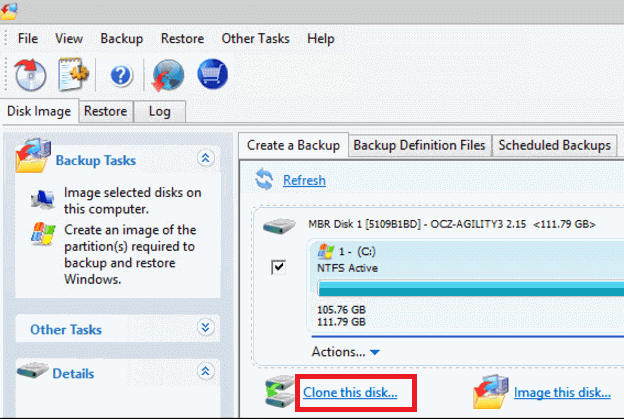

- Create image of hard drive and restore to ssd install#
- Create image of hard drive and restore to ssd upgrade#
- Create image of hard drive and restore to ssd full#
- Create image of hard drive and restore to ssd verification#
Create image of hard drive and restore to ssd verification#
Create image of hard drive and restore to ssd upgrade#
You'll have to upgrade to a paid plan if you want to set scheduled image backups.)Ĭlick Next when you're satisfied with the scheduled backup options. (You can skip this step if you just want to create an image once or plan on scheduling things yourself. (It looks like three dots in a row.)Ĭlick the drop-down arrow beneath Select a Template for your Backup Plan. You can also image any other drives on your PC.)Ĭlick the browse button next to the Folder field. (In this case, I chose the drive that holds C: because it holds all the information required to restore my PC in the case of a failure.

Now that Macrium Reflect is installed, you can get busy imaging your drive.
Create image of hard drive and restore to ssd install#
The first step is to install Macrium Reflect on your PC. If you want to create scheduled images, whether incremental or differential, you'll have to upgrade to a paid plan.
Create image of hard drive and restore to ssd full#
Macrium Reflect has a free version that works great for casual users who want to make a single, full image of their hard drives. For just the cloning and imaging software, you'll spend about $40. There are a few buying options to choose from when it comes to Acronis - there is also a 30-day free trial - including subscription options that come with 50GB or 1TB of cloud storage. Its UI is super simple to use, and you can even set an automatic file sync that will keep your backup up to date. Like Macrium Reflect, there is a fully-functional, free version of AOMEI that lets you create system images, back up hard drives, and clone drives. We've been using Macrium Reflect for a while and so far haven't found a reason to switch, but there are also plenty of other imaging options out there, including one built right into Windows 10. See our external hard drive buyer's guide Imaging software options You can use a secondary internal drive, a network location, or an external drive connected via USB. īefore you begin, you should prepare a place to save your drive images, because images can't be saved on the same drive you're imaging.

For more information about imaging, check out our comparison between drive imaging and drive cloning: Images can be stored on external drives in the event of a failure and can be used to completely restore a PC when things go wrong. One way to back up your drive is to create an image, which is basically a compressed snapshot of your entire drive, OS and all. It makes life way easier in the event of a drive failure, and thanks to intuitive software, the whole ordeal is quite painless. Creating backups of your data is a great idea for pretty much everyone.


 0 kommentar(er)
0 kommentar(er)
